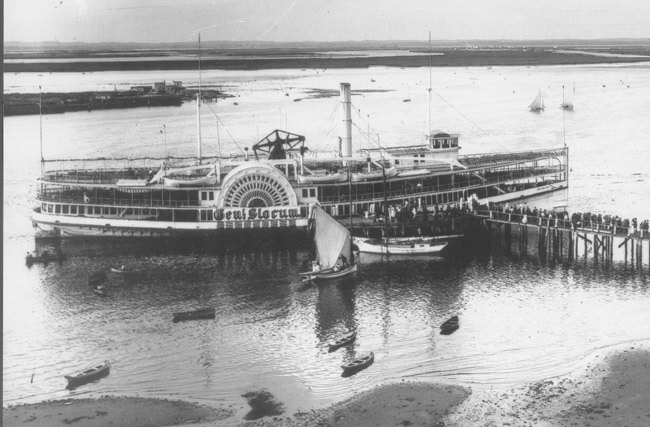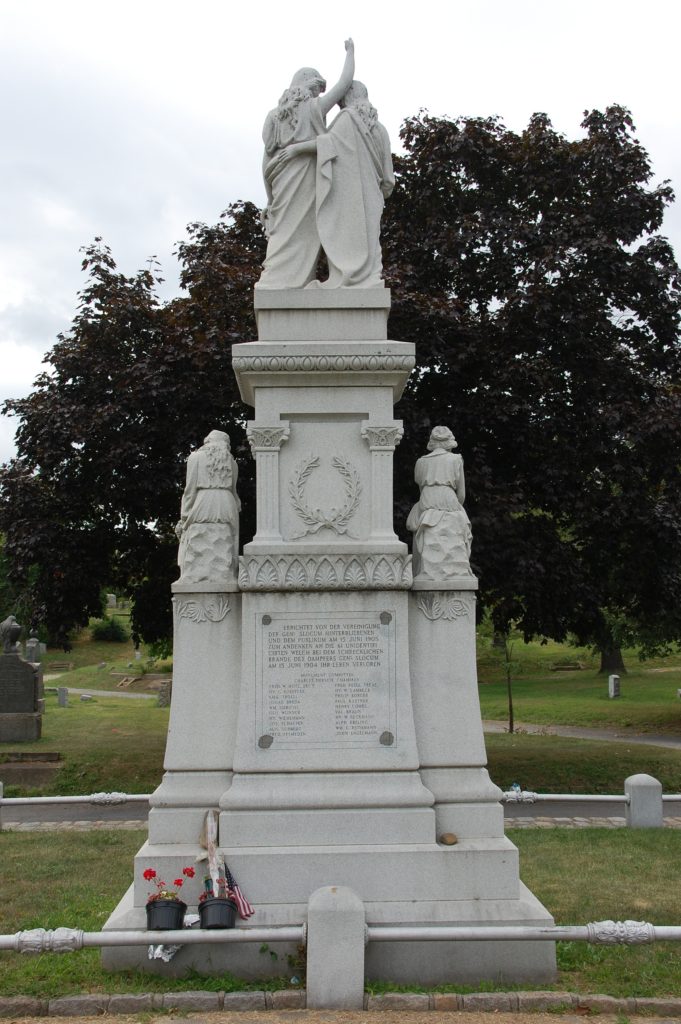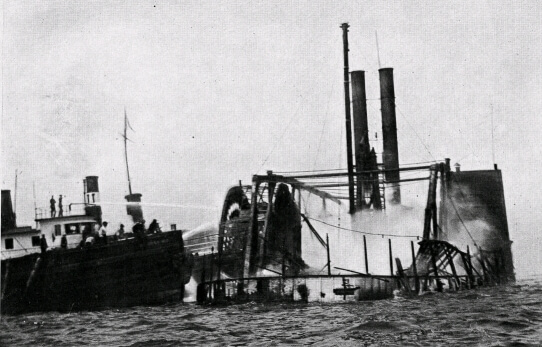Every June, residents gather at Lutheran/All Faiths Cemetery in Middle Village to mark the anniversary of New York City’s worst marine disaster.
The annual ceremony takes place at the cemetery’s Slocum Memorial, erected to the more than 1,000 souls who died during the final voyage of the General Slocum, a pleasure boat that caught fire while carrying families through the East River.
Interred at the memorial are the bodies of 61 passengers who could not be identified in what was, up until the Triangle Shirtwaist Factory fire in 1911, the deadliest fire in New York City history.
The doomed trip began at 9 a.m. on June 15, 1904, when the Slocum left her dock at Third Street and the East River in Lower Manhattan. Constructed in 1891, the Slocum was a paddle wheel board powered by a steam engine and featured three decks to allow travelers places to stand and enjoy the view around them.
Capt. William H. Van Schaick commanded the crew of 23 that operated the Slocum for the Knickerbocker Steamship Company. Plans for this trip were to bring passengers up the East River and through Long Island Sound to Port Washington for a Lutheran School picnic. The ship was scheduled to return to the Third Street dock at 11 p.m. that evening.

Trouble erupted, however, as the Slocum powered toward the Hell Gate near Astoria, when a fire broke out. Reportedly, Captain Van Schaick handed over control of the Slocum to a mate, Edward Van Wart, so he could devote his attention toward stopping the fire. The captain ordered Van Wart to steer toward North Brother Island, a small island located near the Bronx’s south shore.
However, according to reports, the ship could have been easily steered toward one of the piers near the Hell Gate. The captain later said he did not want to dock there out of fear that the fire would spread to the wooden piers.
So the Slocum continued its journey toward North Brother Island, and the fire soon became out of control. Crew members tried to use fire hoses to douse the blaze, but the hoses reportedly fell apart due to rot.
The New York City Fire Department was alerted to the disaster and stationed fire engines to the long dock at 138th Street in the Bronx, hoping the Slocum would pull in close enough for firefighters to pour water on the ship. However, the Slocum passed the dock and kept going until it ran aground at Brother Island.
By then, the ship was completely engulfed, as is upper decks had collapsed. The lifeboats were never deployed, as reportedly they were impossibly wired to the rest of the ship.
In the end, approximately 1,030 of the 1,500 passengers on the Slocum died either in the fire or drowning after jumping into the river. Captain Van Schaick and his crew survived and worked to save some lives.
Following the investigation, the captain was brought up on—and convicted of—manslaughter and failing to properly train his crew in fire prevention and protection. Van Schaick was ordered to serve 10 years behind bars but was pardoned in 1908 by President Theodore Roosevelt due to failing health.

Originally published in the May 26, 2016 issue of the Ridgewood Times.
* * *
Share your history with us by emailing editorial@ridgewoodtimes.com (subject: Our Neighborhood: The Way it Was) or write to The Old Timer, ℅ Ridgewood Times, 38-15 Bell Blvd., Bayside, NY 11361. Any mailed pictures will be carefully returned to you upon request.

































